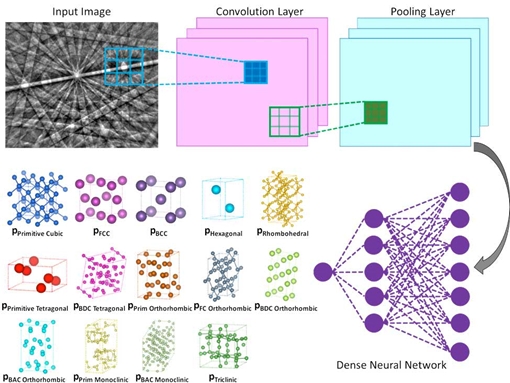|
DIVULGAÇÃO
Machine learning technique speeds up crystal structure determination. The work is published in Science ("Crystal symmetry determination in electron diffraction using machine learning").  Illustration of the inner workings of a convolutional neural network that computes the probability that the input diffraction pattern belongs to a given class (e.g. Bravais lattice or space group).
Compared to other electron diffraction techniques, such as those in transmission electron microscopy (TEM), SEM-based EBSD can be performed on large samples and analyzed at multiple length scales. This provides local sub-micron information mapped to centimeter scales. For example, a modern EBSD system enables determination of fine-scale grain structures, crystal orientations, relative residual stress or strain, and other information in a single scan of the sample. However, the drawback of commercial EBSD systems is the software’s inability to determine the atomic structure of the crystalline lattices present within the material being analyzed. This means a user of the commercial software must select up to five crystal structures presumed to be in the sample and then the software attempts to find probable matches to the diffraction pattern. The complex nature of the diffraction pattern often causes the software to find false structure matches in the user selected list. As a result, the accuracy of the existing software’s determination of the lattice type is dependent on the operator’s experience and prior knowledge of their sample. The method that Vecchio’s team developed does this all autonomously, as the deep neural network independently analyzes each diffraction pattern to determine the crystal lattice, out of all possible lattice structure types, with a high degree of accuracy (greater than 95%). A wide range of research areas including pharmacology, structural biology, and geology are expected to benefit from using similar automated algorithms to reduce the amount of time required for crystal structural identification, researchers said. UC San Diego. Accessed: Feb 06, 2020.
|
||||||||||||||||||||||||